Visit in the fall of 2007 from Vienna to Nuremberg.
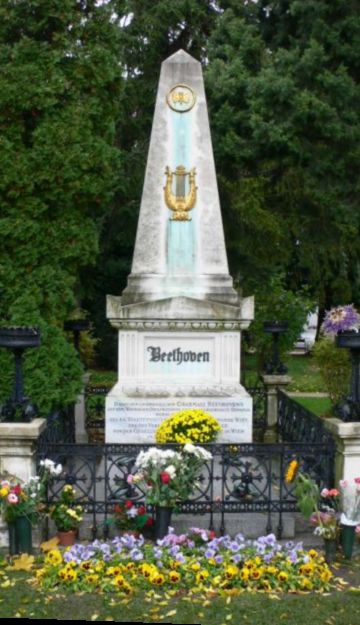 ...
...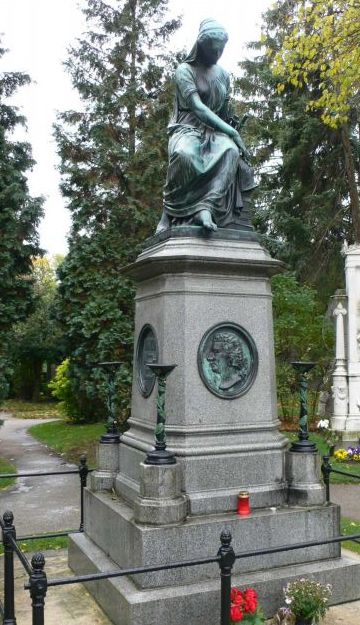
The Central Cemetery in the Vienna suburbs is home to the most famous people in the city's history, with a musician's section. Here are Beethoven's grave and a Mozart memorial.
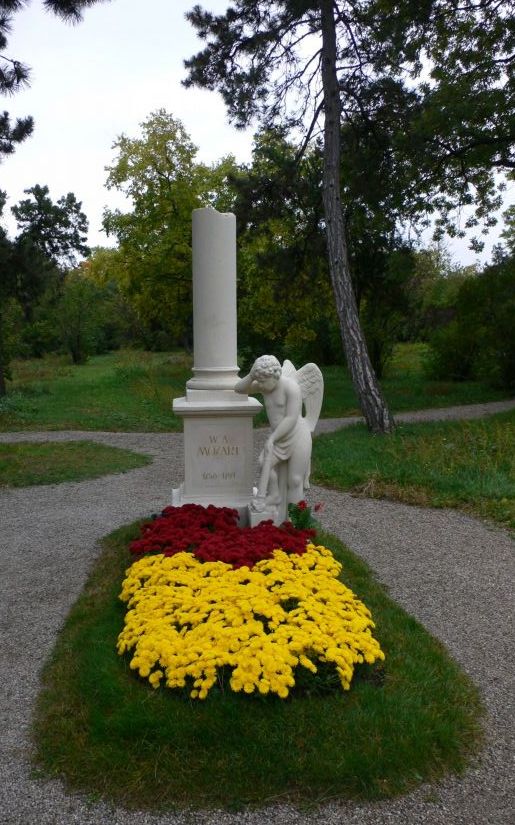
Mozart was actually buried in the nearby St. Marx cemetery in an unmarked grave, but a nice memorial was erected some years later.
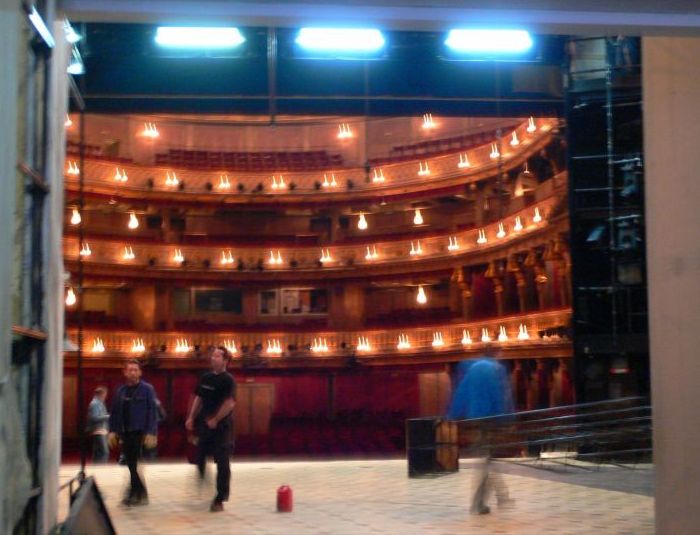
In the spirit of touring every place used by Mozart or Beethoven, we arranged a private tour of the "Theatre on der Wien", used as an opera house in Beethoven's era. This backstage view showed a Russian group setting up the stage for their touring performers.
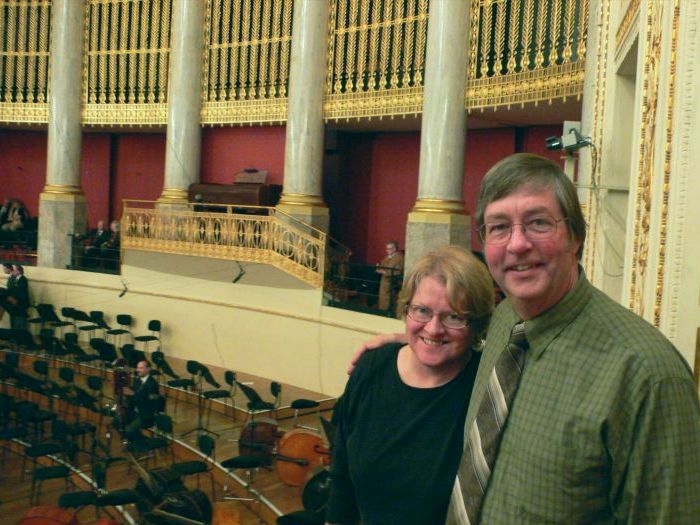
One of the highlights of the trip was a concert performance of Europe's premier symphony, the Vienna Philharmonic. I actually took a tie on vacation!
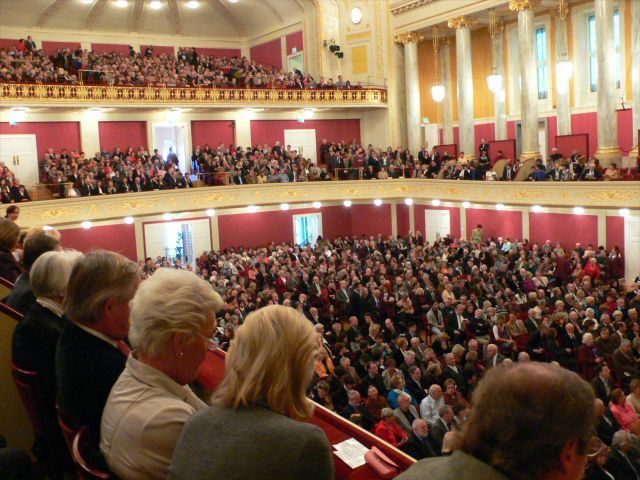
The Konzerthaus was completely full, holding about 1900 guests.
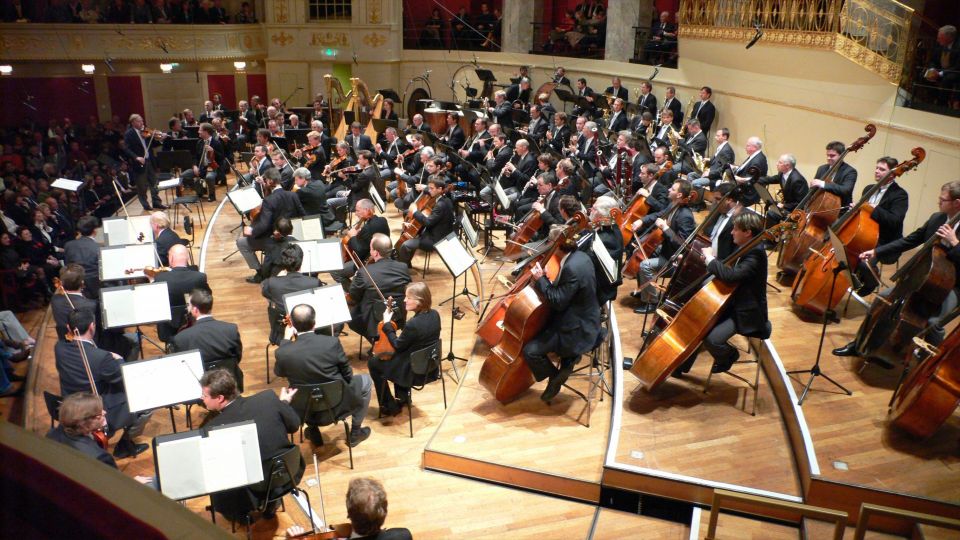
At this Saturday afternoon concert, we had the end row seats on the balcony overlooking the stage. The performers were just tuning up before the concert. Looking over the audience, most men wore suits and ties, but a significant fraction wore jackets or sweaters without ties. I even saw two guys in t-shirts, probably tourists, like us. The guy behind us slept through most of the concert.
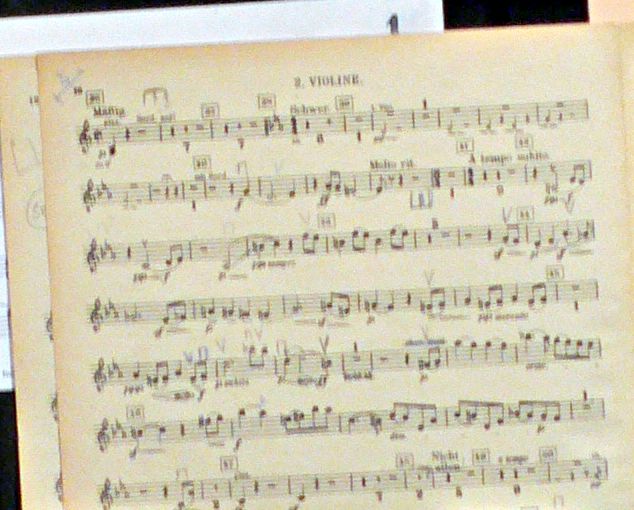
We were close enough so that we could even read the music on the 2nd Violinst's music stand. I could follow which piece was playing by looking at the titles on the stands.
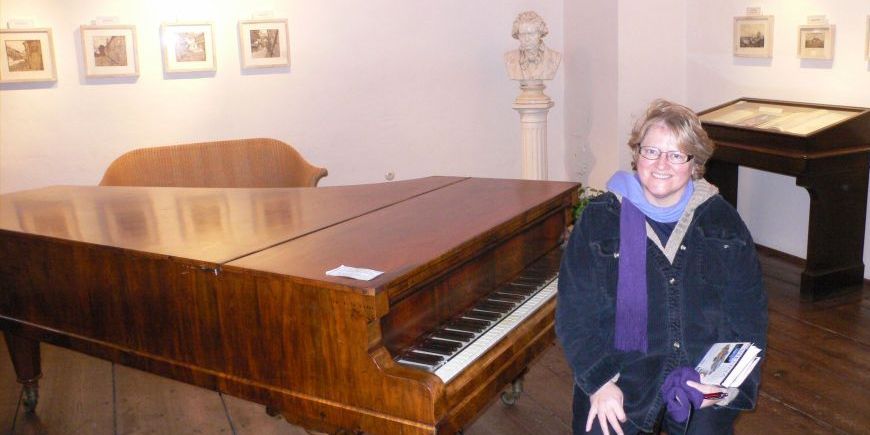
Beethoven's occupied many apartments in Vienna, but only two of them are open as museums; the Pasqualati House and the Heiligenstadt apartment. Carol beamed while sitting at an old piano in one of the museums.
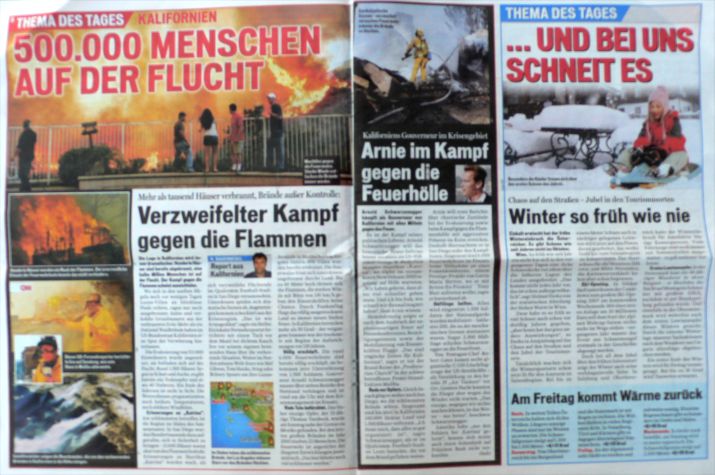
On Monday, we were hearing the first stories of the firestorms in San Diego! CNN (the international edition) and BBC television showed our neighborhood in flames. Austria is proud of California's governor Schwarzenegger, and the local television news highlighted his appearances in the fire zones. This paper was collected later in the week, and showed the typical coverage. Fortunately, we were able to call a few friends and neighbors to confirm our home was intact, and was able to follow even more details using the internet in the hotel lobby to check on the San Diego newspaper site. The fires certainly concerned us, and we briefly considered returning early, but since our home was in a mandatory evacuation region, it made more sense to stay in Europe until the fires subsided.
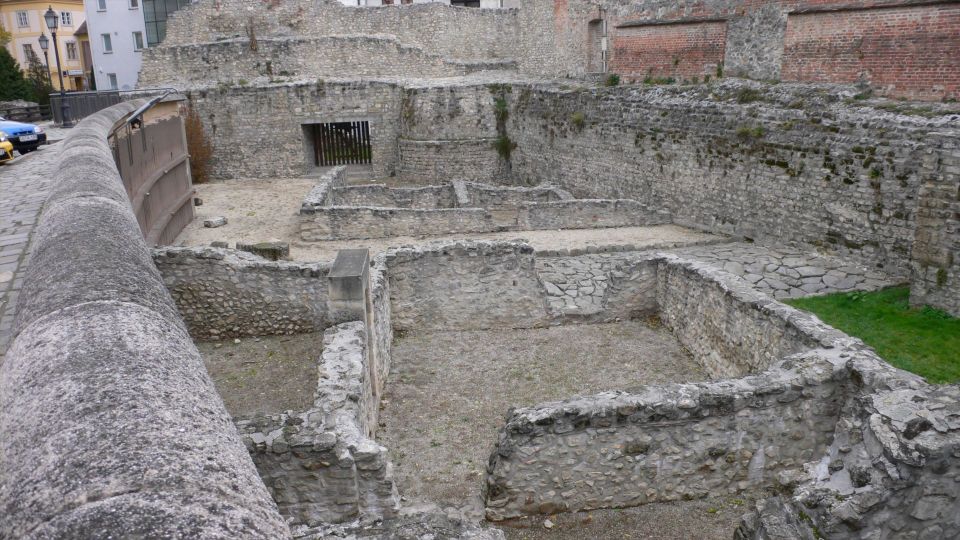
Before the rains in Vienna were expected to strengthen, I took a half-day trip to Sopron, Hungary, just across the border. Budapest was a slightly more distant option, and was probably more geared toward tourists, so I chose the smaller town. I didn't anticipate much to see in the town, and could walk across the entire place in an hour. It seemed to be a place where border-crossers could get cheap dental care and cosmetic treatments, but there were no fantastic cathedrals or outstanding museums to visit. The Roman ruins shown here were well-preserved near the center of town.
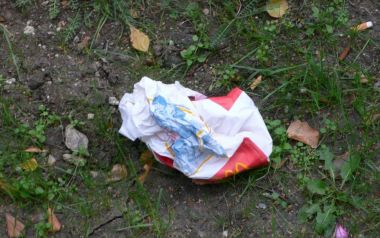
I only had a coarse street map of the town, and a hint of the McDonald's location. I was getting worried that I could not find it, but then, I saw this piece on the ground, I knew I must be close. My goal turned out only a block away, and the maps I had were all pretty accurate. No need for a hand-held GPS, yet!

My main motivation for the quick trip was to visit McDonalds in yet another foreign country. The place was clean and the staff spoke a little English, but no one in town seemed especially friendly. Not a country I will expect to return
to. The costs were significantly less than Austria, however, so I bought some provisions to take back to Vienna, including a coat for Carol.
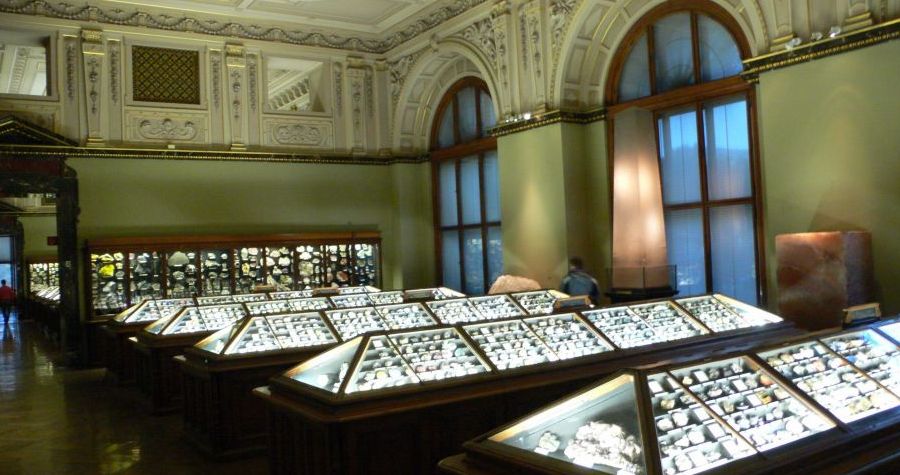
The Natural History Museum in Vienna has a very extensive systematic
collection in four rooms like this. There were not a large number of truly remarkable, large display specimens, but the ones that were lining the walls were varied and interesting. I always look for some particular small specimens to compare to my personal collection, and found that some of mine are better than some of the ones on display here. The size of this collection, however, was very impressive, and I could not spend time looking at every case.
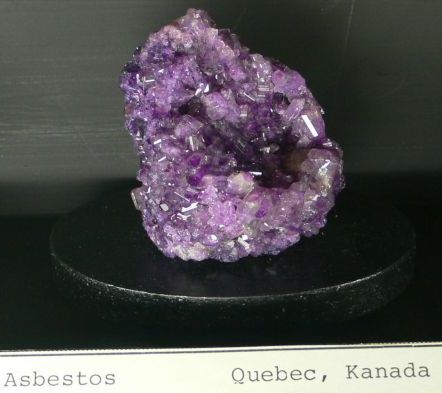 ...
...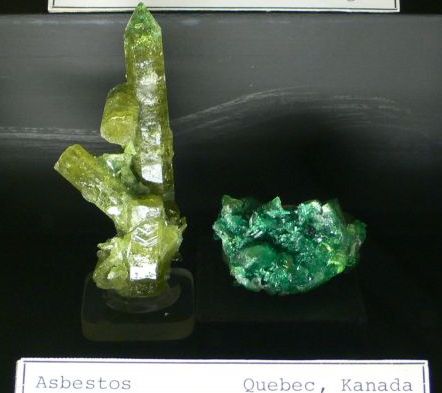
Among the more interesting specimens were these from Canada. I don't recall ever seeing such nice, crystallized specimens. I wonder if the specimens are misplaced? They look like apatite, but maybe I was in too much of a hurry to understand the labelling system.
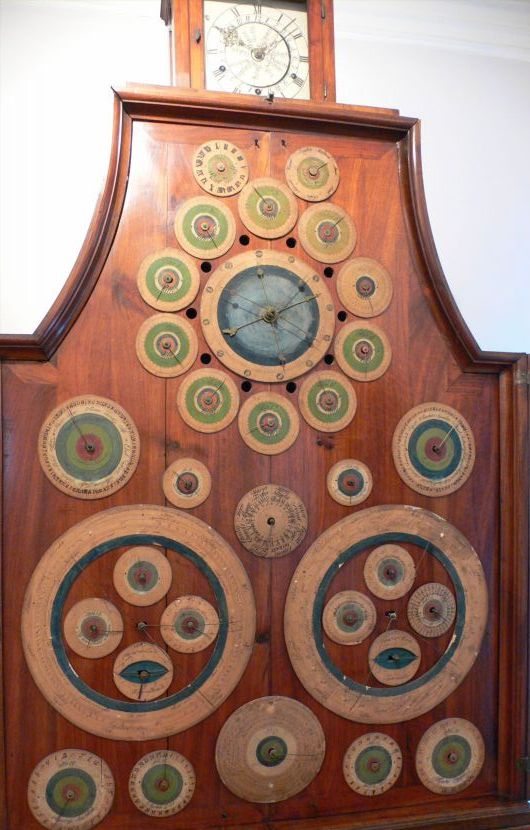
One of the more unusual museums is the Clock Museum in Vienna. Shown here is an astronomical clock with dials for the main planets as well as some of the asteroids, including at least Pallas and Juno. Also in the museum were a variety of very small and very old clocks.
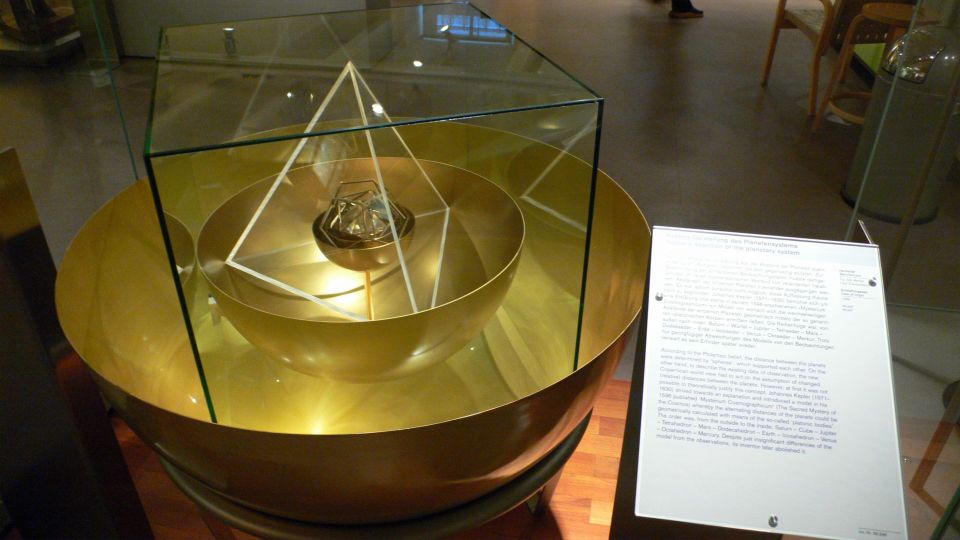
The Technical Museum was a pleasant surprise. The science section had a wonderful collection of old astronomical instruments, including telescopes used by Kepler and Fraunhofer. A model of Kepler's geometric interpretation of the harmony of the spheres, shown above in a model about 1 meter across, was very nice!
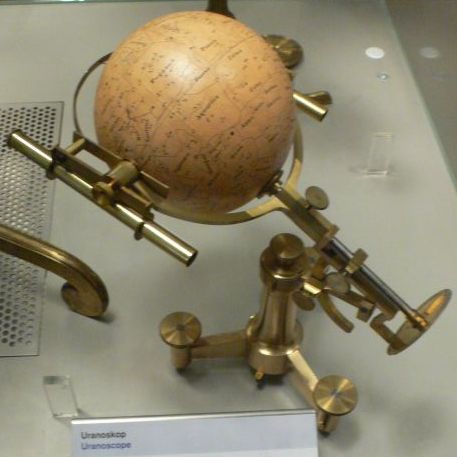
A current fad in amateur astronomy is an electronic device one points at a star, whereupon the device tells you which star you are looking at. This model serves the same function - built in 1846!
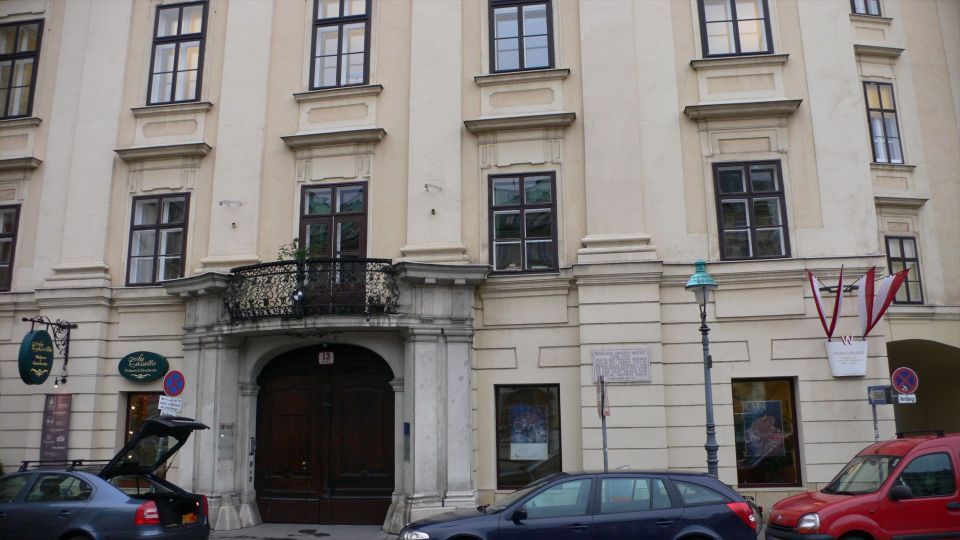
Carol was looking for the Collalto Palace, but did not have the precise address. According to the map it was close to the Clock Museum I visited earlier, but the museum staff did not know where the building was located. I went to another museum a few blocks away, and they did not know where it was, either. The staffer there was not busy, so he used Google to find a list of all the palaces in Vienna, and there found the Collalto Palace. He still did not know the location, but the web photo included part of a white building, and he said that since it was white, it must be a church. I went back to the plaza and found the building that looked like the web photo, and immediately saw the red and white flags that indicated a historical building. It was the Collalto Palace. The arched doorway in the lower right-hand corner, by the red car, leads to the entrance of the Clock Museum about 50 feet away!
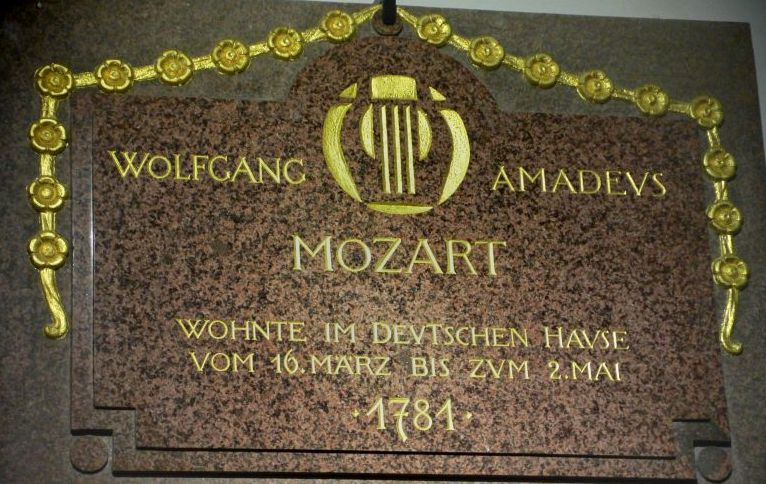
The final concert we attended was in the "Mozart House". The Mozart Museum staff a few blocks away helped direct us to the place, and did not know why it was famous. According to the plaque on the wall, Mozart stayed here a total of 6 weeks. I guess that is enough to qualify as one of his homes. Mozart and Beethoven moved around a lot.
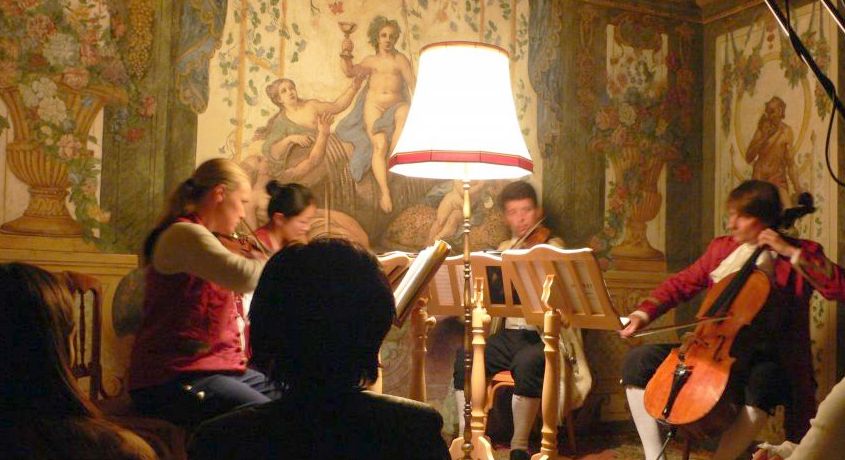
A classical concert in a hall used by Mozart - the Sala Terrena, was our last concert in Vienna. The hall was very small, and even though we were in the third row, we were lucky enough to have mainly empty rows in front of us, and the musicians only 15 feet away. The music at this concert seemed to be the most entertaining of all the concerts. The musicians wore clothes in the style of Mozart's time.
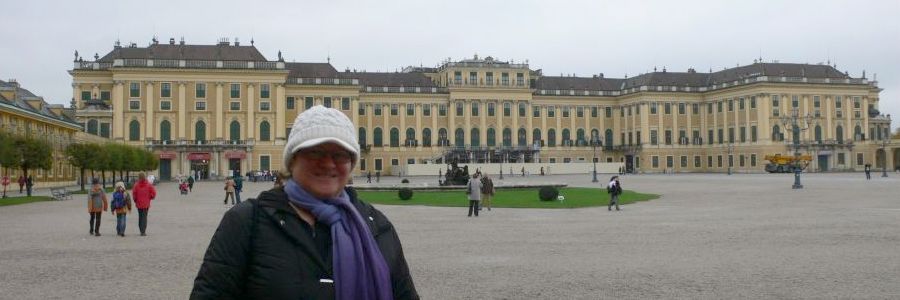
Schönbrunn, the summer palace in Vienna, was rather cool and damp in late October. While the gardens might have been a wonderful tour a few weeks ago, we only went inside for the tour, including the room where Mozart performed as a young child.
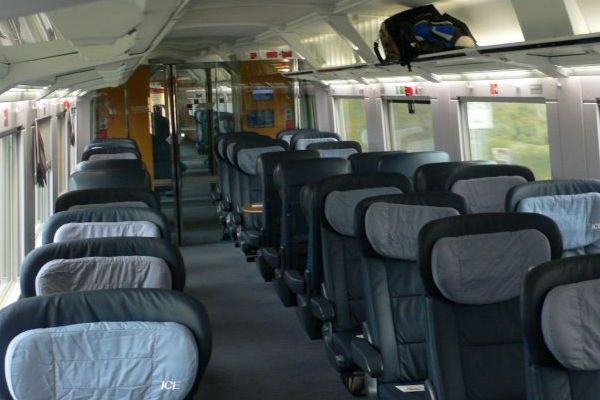
After 10 days touring Salzburg and Vienna, we left the music and took a train to Linz. Instead of second-class Eurail passes, we opted for first-class seats. One benefit we did not anticipate was the nearly empty first-class cars. We were the only passengers in this leg, and the cars in front and back had only a few people. Later, the car filled up about half way. Reservations apparently are not often required in this class of service.
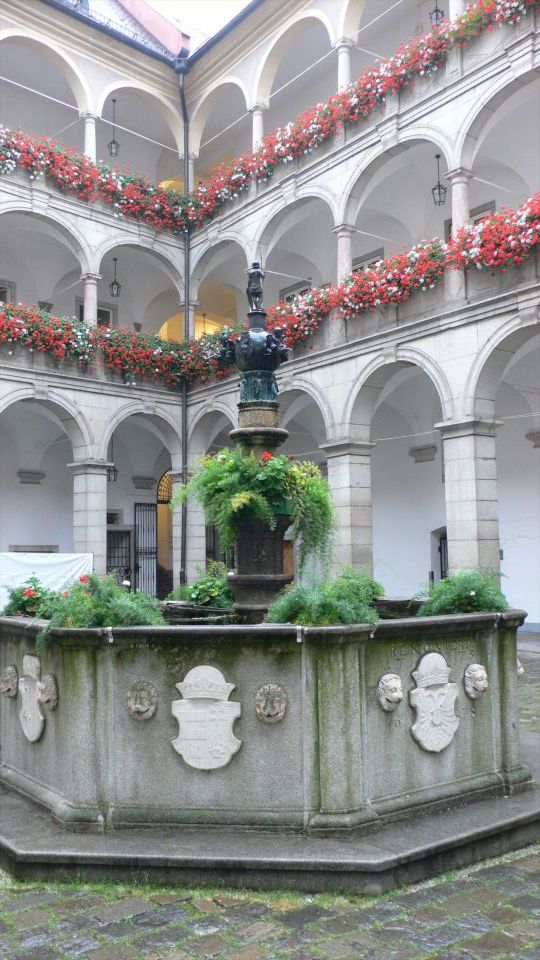
In Linz is the Kepler Fountain. It was built to commemorate the time Kepler spent in this town, working and teaching.
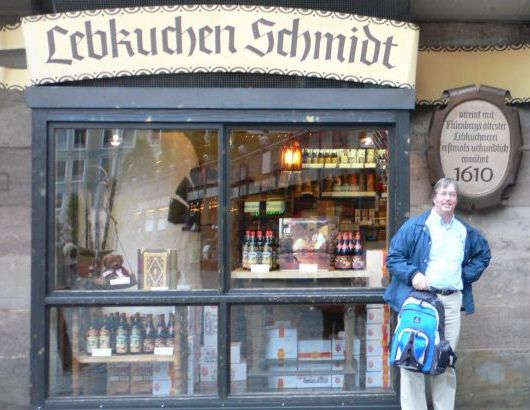
Our last stop before flying back home was an overnight in Nuremberg with the express purpose of picking up some Lebkuchen. After visiting Torun, the gingerbread capital of Poland, I compared the German variety, and the Nuremberg varieties had the better flavor. So, I filled up my backpack with all the chocolate-covered cookies I could carry! I hope they last until Christmas... The next time in Germany, I think we can spend a little more time in this town (the home of many old astronomical instruments) and nearby Regensburg.
Return to Germany-Austria2007
All text and images are owned by Stellar Products, 1992-2007. Any use by others without permission of Stellar Products is prohibited.
Links to other Stellar Products pages:
Stellar Products Home
Image gallery
Adaptive optics tutorials
...